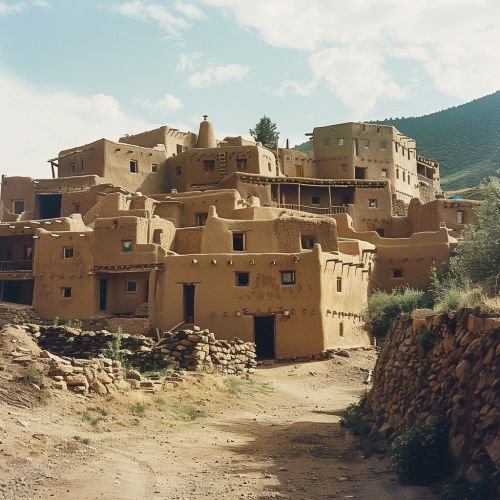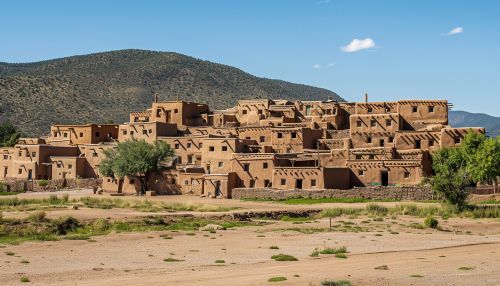Pueblo peoples
Introduction
The Pueblo peoples are Native American tribes who are indigenous to the Southwestern United States, particularly in the regions of Arizona and New Mexico. They are known for their unique culture, architecture, and agricultural practices, which have been preserved and passed down through generations. The term "Pueblo" is derived from the Spanish word for "town" or "village", which reflects the communal lifestyle and the distinctive multi-story adobe structures that these tribes are renowned for.


History
The history of the Pueblo peoples dates back to the Ancient Puebloan period, also known as the Anasazi period, which began around 1200 BCE. This period is characterized by the development of agriculture, specifically the cultivation of maize, and the construction of pit houses. The Ancient Puebloan period is further divided into the Basketmaker and Pueblo stages, which saw advancements in pottery making, architecture, and societal organization.
The Classic Pueblo period, from 1050 to 1300 CE, marked the height of Pueblo civilization. During this time, the Pueblo peoples built impressive cliff dwellings and multi-story pueblos, developed intricate irrigation systems for farming, and created exquisite pottery and woven textiles. The Pueblo peoples also developed a complex religious system with elaborate ceremonies and rituals, which are still practiced today.
The Post-Classic Pueblo period, from 1300 to the arrival of the Spanish in the late 16th century, was a time of migration and change for the Pueblo peoples. Factors such as climate change, resource depletion, and external pressures led to the abandonment of many pueblos and the relocation of Pueblo peoples to the Rio Grande Valley.
The Spanish colonization in the 16th century had a profound impact on the Pueblo peoples. The Pueblo Revolt of 1680 was a significant event during this period, where the Pueblo peoples united to drive out the Spanish colonizers. The Spanish returned in 1692 and reestablished control, but the Pueblo peoples were able to retain much of their culture and traditions.
Culture
The Pueblo peoples have a rich and diverse culture that is deeply rooted in their history and environment. Central to Pueblo culture is the concept of community and the interconnectedness of all things. This is reflected in their architecture, agricultural practices, and religious beliefs.
Architecture
Pueblo architecture is distinctive for its multi-story adobe structures, known as pueblos. These structures are built from a mixture of earth, water, and organic materials, such as straw, and are designed to withstand the harsh desert climate. The pueblos are often built around a central plaza and include kivas, which are ceremonial rooms used for religious rituals.
Agriculture
Agriculture plays a vital role in Pueblo culture. The Pueblo peoples are skilled farmers, known for their innovative irrigation techniques and their cultivation of the "Three Sisters" – maize, beans, and squash. These crops are not only staples of the Pueblo diet but also hold significant cultural and spiritual importance.
Religion
Religion is a fundamental aspect of Pueblo culture. The Pueblo peoples practice a complex religious system that incorporates elements of animism, ancestor worship, and ritualistic ceremonies. Kachinas, or spirit beings, play a central role in Pueblo religion and are often represented in dances, rituals, and art.
Modern Pueblo Peoples
Today, there are 19 Pueblo tribes in New Mexico and one in Texas. Each tribe is sovereign and has its own government, but they share common cultural practices and traditions. The Pueblo peoples continue to live in their ancestral lands and maintain their traditional ways of life, while also adapting to modern society.
Despite the challenges of colonization, assimilation policies, and modernization, the Pueblo peoples have managed to preserve their culture and identity. They continue to practice their traditional crafts, such as pottery making and weaving, and their religious ceremonies and rituals. The Pueblo peoples also continue to farm, utilizing both traditional and modern agricultural techniques.
